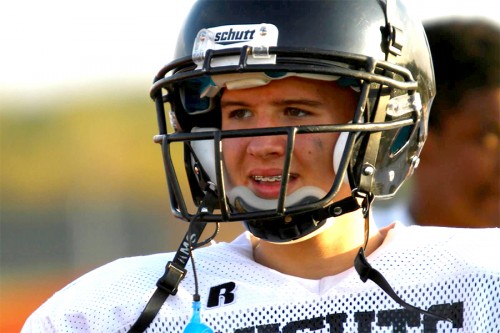New Concussion Guidelines For Children’s Sports
Being one of the roughest of all children’s sports, it’s a rare parent who hasn’t had a boy who has been conked on the noggin hard enough to see stars, become dazed or actually go unconscious playing the game. YOU CAN’T DO THAT SO CHEAPLY ANY MORE!
I mean we’ve always known that hitting your head or getting knocked out was bad. It’s just that now we know how bad it really is – and it’s not pretty.
If you follow sports at all, you heard that Junior Seau, one of the NFL’s best and fiercest players for about 20 years, committed suicide in 2012. What you may not have heard was that it was due to the effects of brain degeneration caused by repeated concussions and head trauma.
Chronic Traumatic Encephalopathy (CTE) it’s called and we know the facts because Junior’s family asked for an autopsy and the National Institutes of Health (NIH) did an actual study on his brain tissue. [1]
Wide range of concussion results
What they were trying to understand by the investigation is why Seau had undergone such a dramatic change in behavior before his death. It wasn’t sudden but nearly everyone around him observed that he had developed uncharacteristic wild mood swings, irrationality, forgetfulness, insomnia and depression. Over time they sort of became his characteristic behavior; but, it “wasn’t really him.”
Now we can understand why. Those are pretty much the exact symptoms of CTE – a sort of smoking gun here don’t you think?
Unfortunately, he has been just one of several high-profile cases recently that major league sports is having to explain and deal with both ethically and legally. And it is just these investigations which have brought the needed data to the development of urgently needed sports participation guidelines for children and young adults.
What’s the problem?
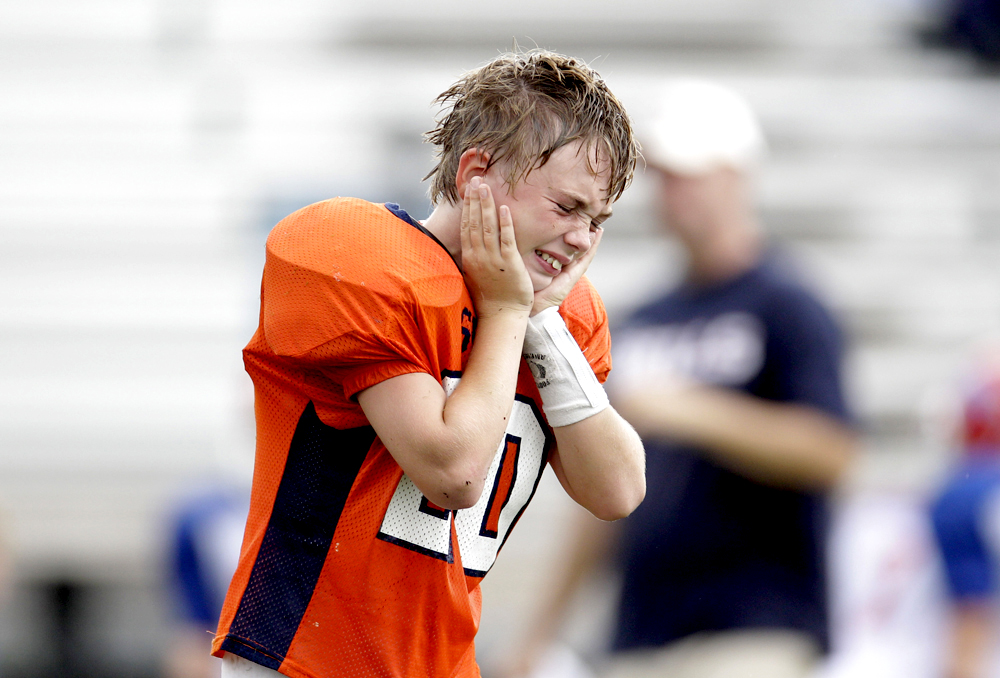 The problem is that there are 1.6 to 3.2 million sports related concussions in the US each year, half in children under 19. And we not only haven’t had any guidelines to significantly address the issue but, until now, there hasn’t been any substantial research that could help develop them.
The problem is that there are 1.6 to 3.2 million sports related concussions in the US each year, half in children under 19. And we not only haven’t had any guidelines to significantly address the issue but, until now, there hasn’t been any substantial research that could help develop them.
Wouldn’t you call 173,285 sports-and-recreation-related traumatic brain injuries (including concussions) – bad enough for the child to be admitted to the emergency room – each year an EPIDEMIC? It sure seems like it. That’s what the CDC reports for children birth to 19.
Almost one in every 500 children who play football each year are seen in the emergency room with a traumatic brain injury (TBI) (0.47 per 1,000 athletes through high school.) In 2011 four of them died! (2-high school, 1-college, 1-sandlot). The last ten year death rate averaged 4.1 and it was 4.8 for the 10 years before that. [2]
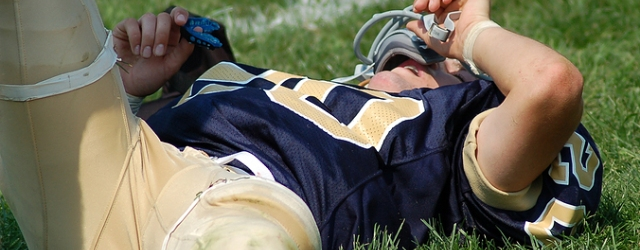 Now you may think that the majority of children with TBI go the ER, get treated, get told to “take it easy” for awhile and (except for the four who die of course) recover completely and go on to complete their life-long dreams. Nope! For some things that’s not even close.
Now you may think that the majority of children with TBI go the ER, get treated, get told to “take it easy” for awhile and (except for the four who die of course) recover completely and go on to complete their life-long dreams. Nope! For some things that’s not even close.
Nervous tissue of the body doesn’t regenerate easily, if at all. Nerve damage, even in the brain (especially in the brain) is very often – most often – nearly always: permanent! Can you understand now why physicians, who are weighing risks for the guidelines they make, don’t consider a risk of breaking a bone and a risk of breaking a nerve even in the same level?
The current discussions and furor revolves around college and professional athletes, but what about the risk of brain injuries for children and teenagers participating in tackle football? A previous article has described new research findings concerning concussive forces in children’s sports like football (American) and soccer (European football). But data on children is still evolving, even though between four and 4.5 million children in the United States play the sport annually.
New Concussion Guidelines
The “return to play” guidelines we’ve been using until now made sense when they were released in 1997; but, current data doesn’t support their assumptions. Before we tried to classify a concussion’s severity when it happened and allow resumption of play according to that.
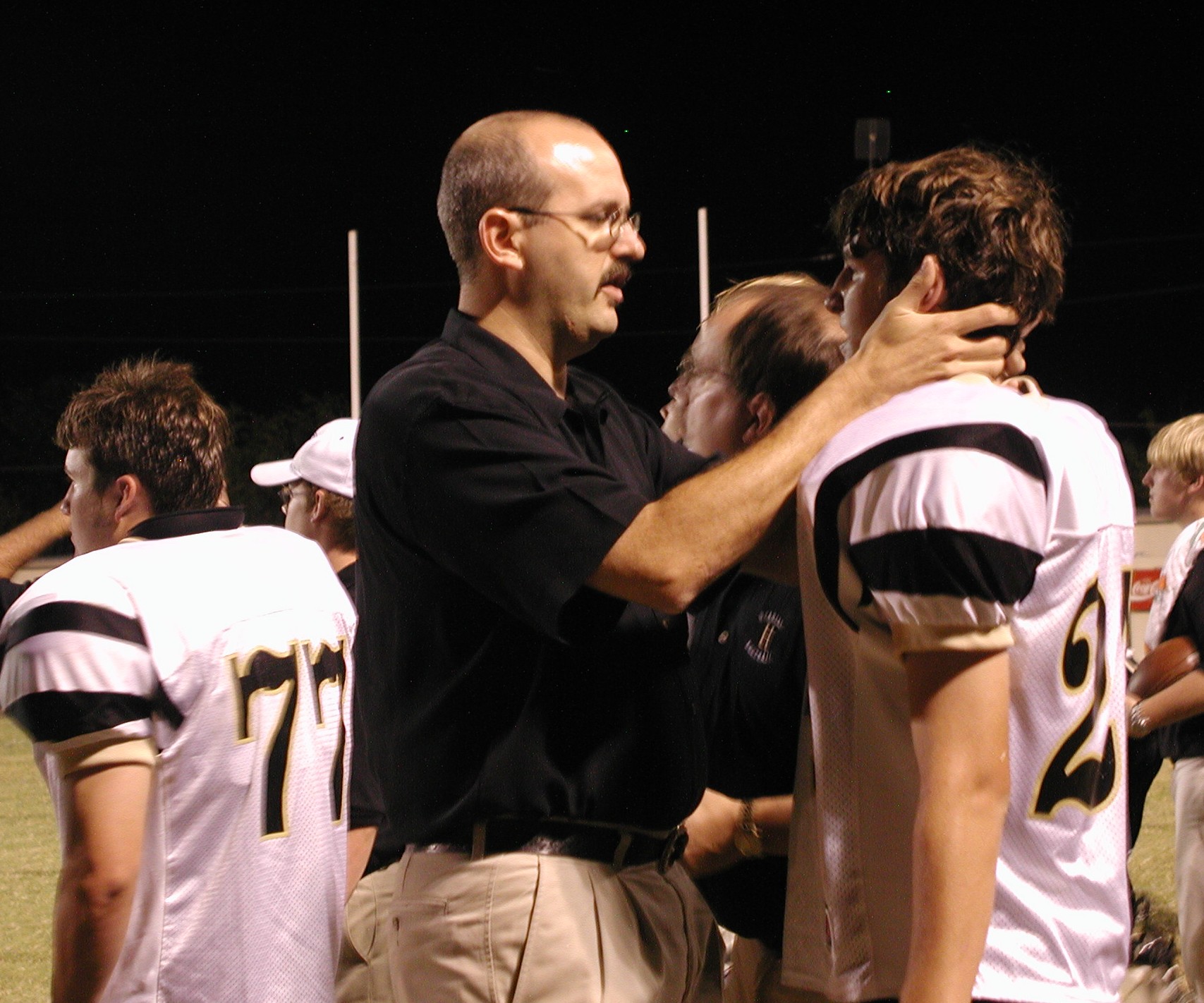 However, beginning last March, the sports world needs to adjust to much more comprehensive and up-to-date guidelines announced by the American Academy of Neurology (AAN) at their 65th Annual Meeting.
However, beginning last March, the sports world needs to adjust to much more comprehensive and up-to-date guidelines announced by the American Academy of Neurology (AAN) at their 65th Annual Meeting.
“Immediately removing from play an athlete who is suspected to have sustained a concussion” is still called for “in order to minimize the risk for further injury.” The “further injury (Level B)” that they are talking about is the often deadly “re-injury syndrome” where previously damaged tissue is re-injured, and which is a whole, whole lot worse.
And still “they should not be allowed to return to play until the athlete has been assessed by a licensed healthcare professional with training both in the diagnosis and management of concussion and in the recognition of more severe traumatic brain injury (TBI) (Level B).”
But, that’s about where the old and new guidelines completely diverge. There is now NO SET TIME FOR RETURN TO PLAY. And, we now know that attempts to classify severity do not predict athletes taking longer to recover; so, we have completely moved into individualized assessment of the injury and plans of treatment – including “return to play” decisions.
Evidence Based Guidelines
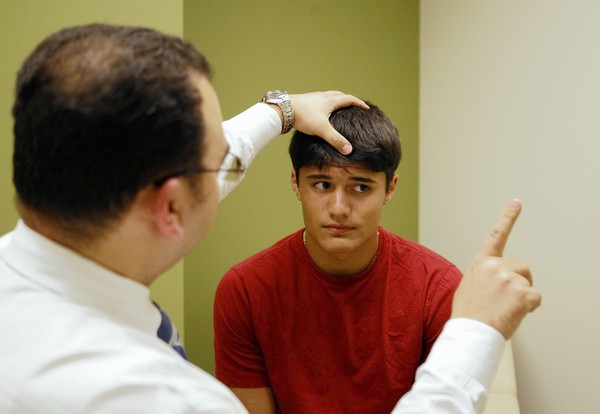 So, once the athlete has been suspended from play due to suspected concussion, the attending physician is expected to construct his subsequent plan based upon “the evidence” – not only the specific case but also data from the literature where the “evidence” points toward a particular finding or procedure.
So, once the athlete has been suspended from play due to suspected concussion, the attending physician is expected to construct his subsequent plan based upon “the evidence” – not only the specific case but also data from the literature where the “evidence” points toward a particular finding or procedure.
Lest you want to balk at them, these new findings have the endorsement of just about everyone from the NFL Players, to AF Coaches and Trainers and to neuroligist, psychologist, critical care and emergency room physician’s societies. Why, because they were the consensus of twelve professionals from every profession mentioned and more, and they involved reviewing every piece of literature from 1955 to June 2012.
Return To Play Based On These Findings
- There is no evidence for pharmacologic interventions to improve recovery after concussion. “No evidence” doesn’t mean that they read a bundle of studies which didn’t show anything – in this case it means that no one had studied the issue – and it needs to be done.
- Realize that the risk for concussion is greatest in football (American) and rugby, followed by hockey and soccer. The risk for concussion for young women and girls is greatest in soccer and basketball. (These were based on the sports reflected in the literature)
- An athlete who has a history of 1 or more concussions is at greater risk for being diagnosed with another concussion. The “second impact syndrome” (That a second impact during a vulnerable state can result in cerebral edema and death) is still not well elucidated in the literature at level of being “evidence.”
- The first 10 days after a concussion appears to be the period of greatest risk for being diagnosed with another concussion.
- Helmets may prevent concussion vs no helmet, but there is no clear evidence that one type of football helmet can better protect against concussion over another kind of helmet. They should fit properly and be well maintained. Mouth guards protect against dental injury. No evidence they are related to concussions one way or the other.
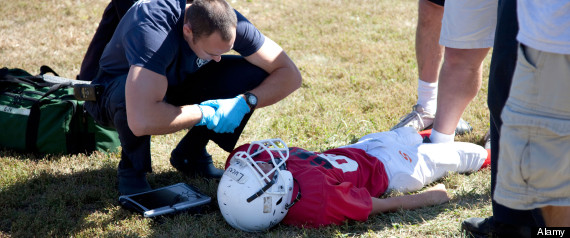 Some of the committee felt that use of unproven protective gear may have the opposite effect of giving athletes a false sense of security, encouraging them to be more aggressive and putting them at higher risk for concussion.
Some of the committee felt that use of unproven protective gear may have the opposite effect of giving athletes a false sense of security, encouraging them to be more aggressive and putting them at higher risk for concussion. - The managing physician should look for ongoing symptoms, history of concussions, and younger age in the athlete. Each of these factors has been linked to a longer recovery after a concussion. Specifically, symptoms such as migraine-type headache and dizziness or self-described “fogginess” seem to be predictive of longer recovery. Interestingly, loss of consciousness at the time of the concussion is not predictive of longer recovery.
- Risk factors linked to chronic neurobehavioral impairment in professional athletes include prior concussion, longer exposure to the sport, and having the ApoE4 gene. Unfortunately (from my way of thinking) the committee didn’t yet review or make recommendations on the scarce literature concerning chronic traumatic encephalopathy (CTE).
- Because concussion is a clinical diagnosis, Symptom checklists and other standardized scales commonly used should be considered helpful tools in diagnosing and managing concussions but should not be used alone for making a diagnosis. There should be a collaboration of multiple disciplines in diagnosis and management of concussion.
- Even though an athlete should immediately be removed from play after a concussion, there is currently insufficient evidence to support absolute rest after concussion. Activities that do not worsen symptoms and do not pose a risk for repeat concussion may be part of concussion management.
What About Concussion Guidelines For Children?
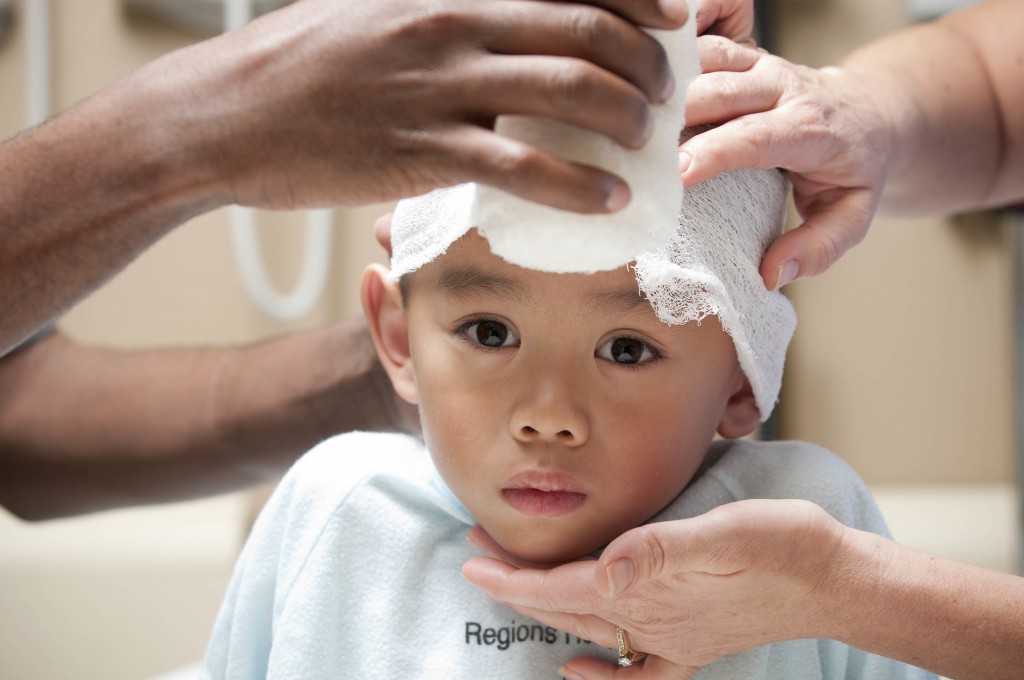 Actually, these updated general guidelines are better than those we have had for children in the past; so, they’ll due pending some more specific head injury guidelines that are anticipated to be published next spring by the newly formed Pediatric Mild Traumatic Brain Injury Guideline Workgroup.
Actually, these updated general guidelines are better than those we have had for children in the past; so, they’ll due pending some more specific head injury guidelines that are anticipated to be published next spring by the newly formed Pediatric Mild Traumatic Brain Injury Guideline Workgroup.
Until then the guidelines state that:
- Athletes of high school age and younger with a concussion should be managed more conservatively with regard to return to play. I can tell you that there have been three good studies so far which have shown that high school aged children took longer for symptoms and cognitive performance to improve following an injury.
Disappointingly, there have been NO STUDIES on children younger than that [a huge deficiency] but there is absolutely no reason to think they heal faster and every reason to believe they actually take longer to heal.
So What Do I DO With My Kids?
I’ll tell you what I’ve been advising parents for fifteen or so years, correctly so it seems now (a tad bit ‘accidentally’ I admit).
 Children are among the most vulnerable to concussion because of weak necks, immature musculature and brains that are still developing so participation in these kind of contact sports may not be at all on some parents agenda.
Children are among the most vulnerable to concussion because of weak necks, immature musculature and brains that are still developing so participation in these kind of contact sports may not be at all on some parents agenda.
If, however, playing one of these is important to the child, I don’t believe he/she should play tackle football (or soccer where heading is allowed) until they have at least reached the age of 14. And, only then IF they are at least within one standard deviation of the height, weight, skill and maturity level of the average 14-year-old.
None of us believe that so-called “sports agendas” are the same as they were 15 or 20 years ago. They are not the same sport in many more ways than they are. Recently participation numbers in childhood football are down 15 to 20 percent which, to me, shows an increasing understanding of the risks of children playing what the sport has become.
Parents With Children In Sports
- This is not a childhood activity which can be left to “others” to manage. Know the game, know the coaches, know the other team members.
- Sports participation should fit into not only the child’s but the parents schedule as well. Participation should NOT outstrip your ability to be actively involved.
- A parent should attend not only games but practices as well. Do NOT rely solely on a child to inform you of “incidents.”
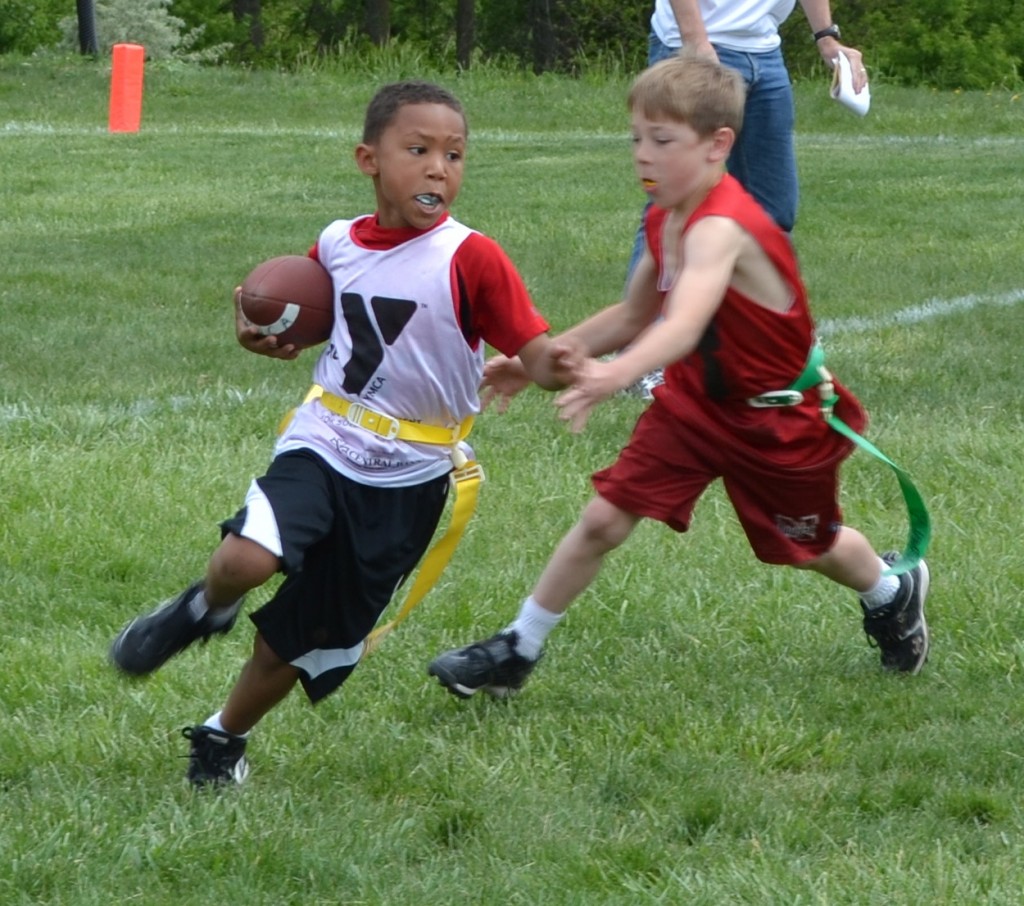 Flag or ‘touch’ football until age 14.
Flag or ‘touch’ football until age 14.- Football and soccer are team sports which require incredible cooperation to be successful – life lessons which are very valuable
- Similar life lessons can be gained in other ways – perhaps with less ‘notoriety.’
- Keep a keen eye out for symptoms of possible brain injuries or other related health issues.
- Problems at school, problems with concentration, sleep alterations, headache and even subtle behavior changes can be major warning signs.
- More acutely there can be problems with balance, coordination or focus as warning signs.
- Beware of any situation where the coach or team relies too much on one child for their success – in child sports that is an accident waiting to happen.
- Steel yourself to the pressure to return to play too soon. We know now that you must avoid a second injury before the brain has had a chance to heal from the first – which most often takes longer than a week.
- There is no need to be “knocked out” in order to have a “concussion.”
- Even what might look like a mild head bump can cause kids to perform poorly for a long time, even in school and personal relationships.
Frankly, my recommendations haven’t always set to well with a few parents; but, the new research findings and these guidelines make me feel sort of vindicated. Besides, I’m in fairly good company: Bryan Hinkle, NFL star with the Steelers for 12 seasons, plans to do with his own 7-year-old son what his parents did with him: Keep him out of tackle football until he reaches 9th grade.
[1 – http://www.voxxi.com/junior-seau-brain-disease-cte-2/ ]
[2 – American Football Coaches Association, NCAA and National Federation of State High School Associations report, Mueller and Colgate.]
11 Posts in Childhood Concussion (concussion) Series
- Helmits?! Do they prevent concussions? – 5 Apr 2017
- Video- concussion management – 30 May 2016
- Video: Concussion 101 – 6 May 2016
- TBI, concussion and early nutrition – 28 Apr 2016
- 5 things to know – 12 Sep 2015
- Football and brain damage – 21 Aug 2015
- 10 scary issues – 18 Jun 2015
- Reading test a predictor of concussion – 30 May 2014
- New guidelines for sports – 27 Jul 2013
- More dangerous than we thought – 24 Jul 2013
- Childhood Concussion Series: Intro/Index – 23 Jul 2013
Advertisement by Google
(sorry, only few pages have ads)

